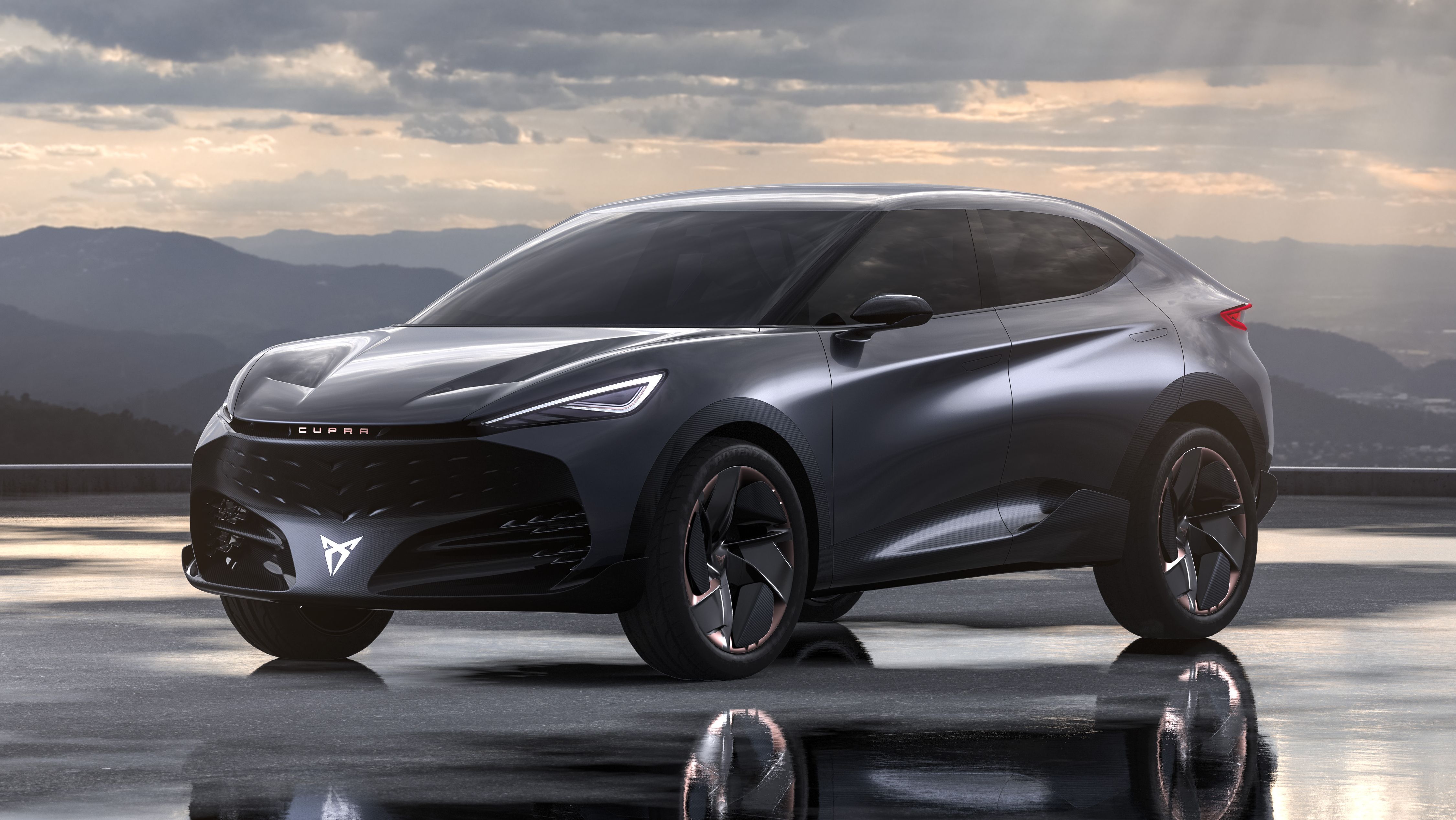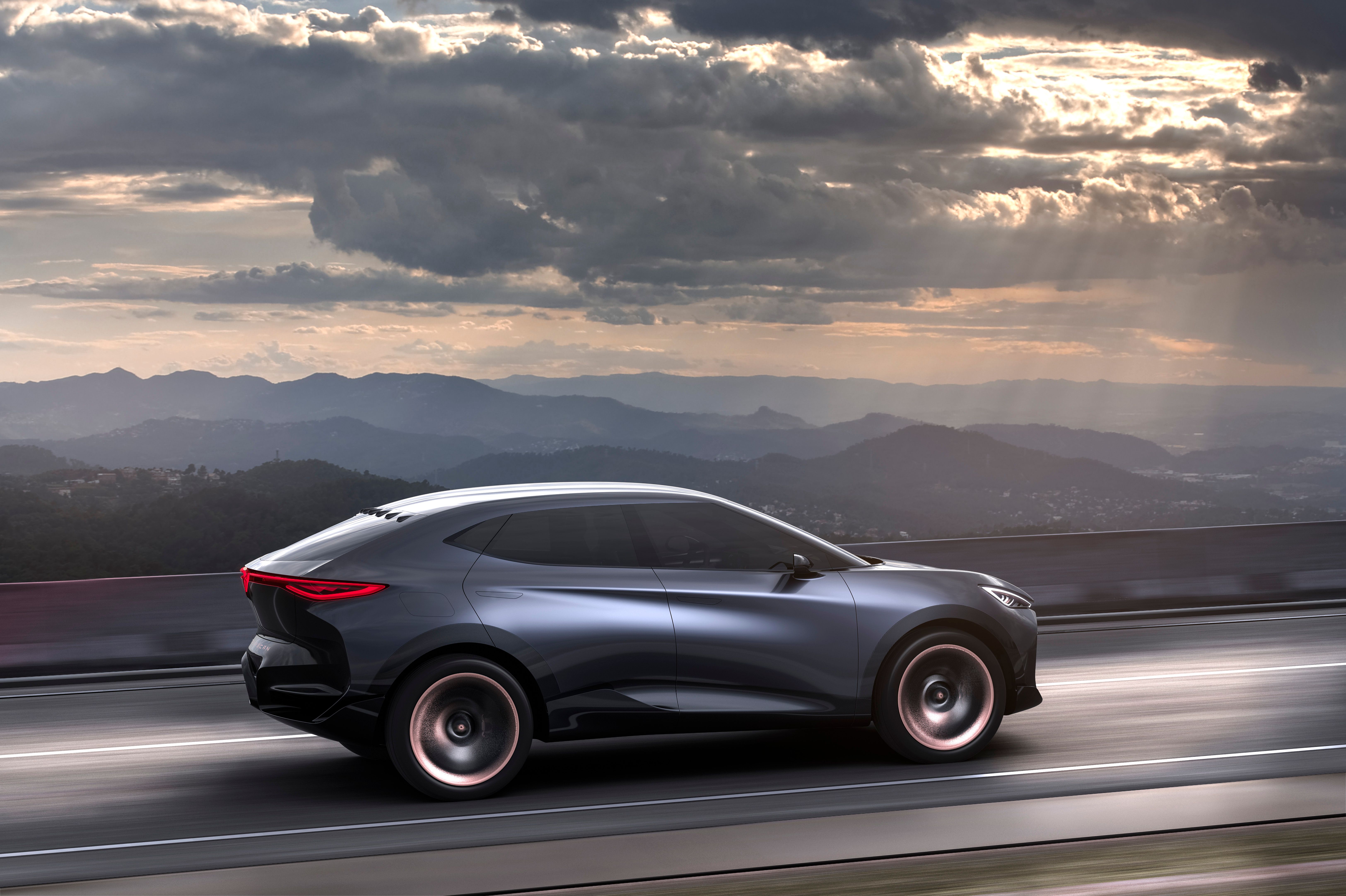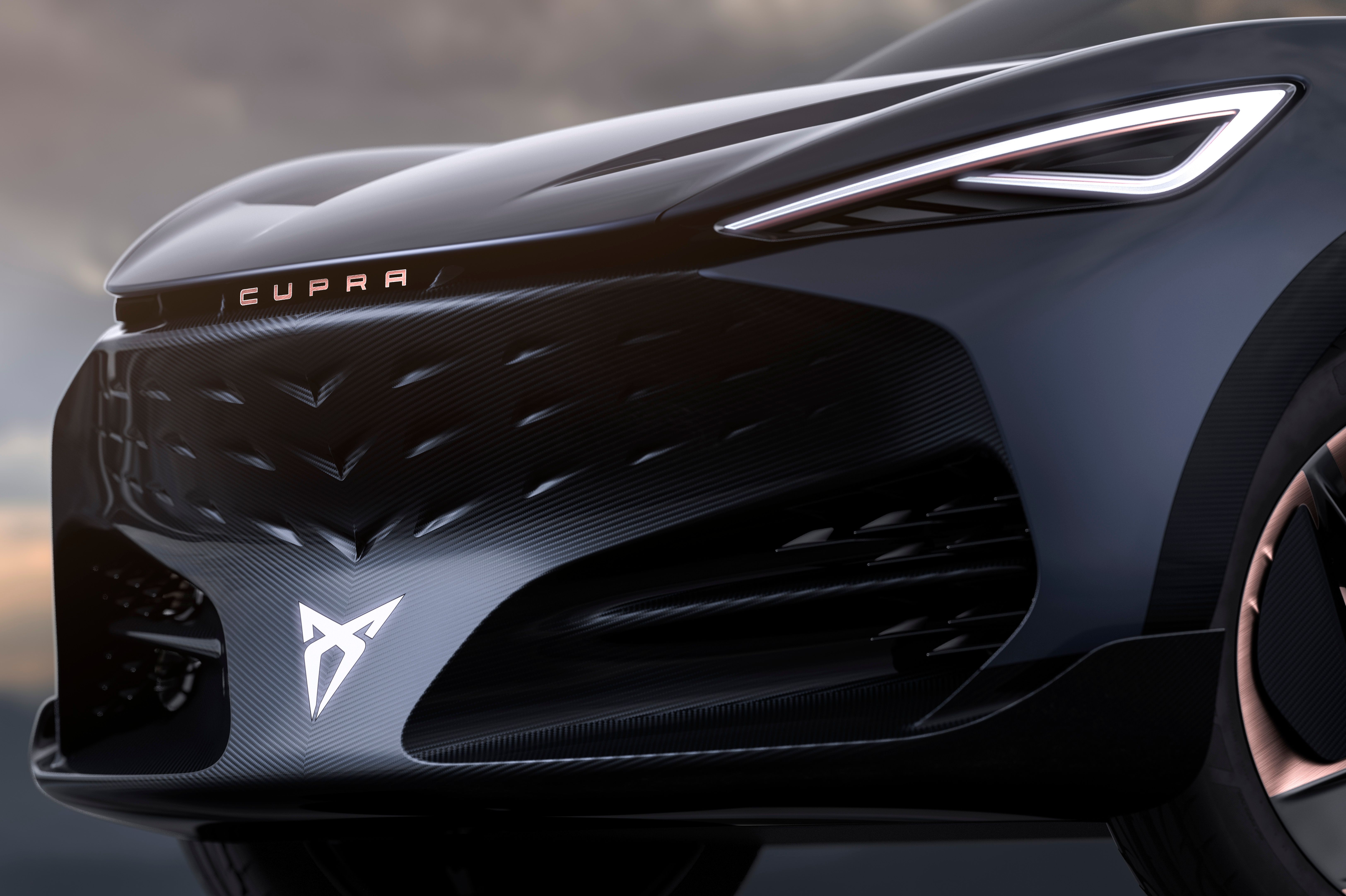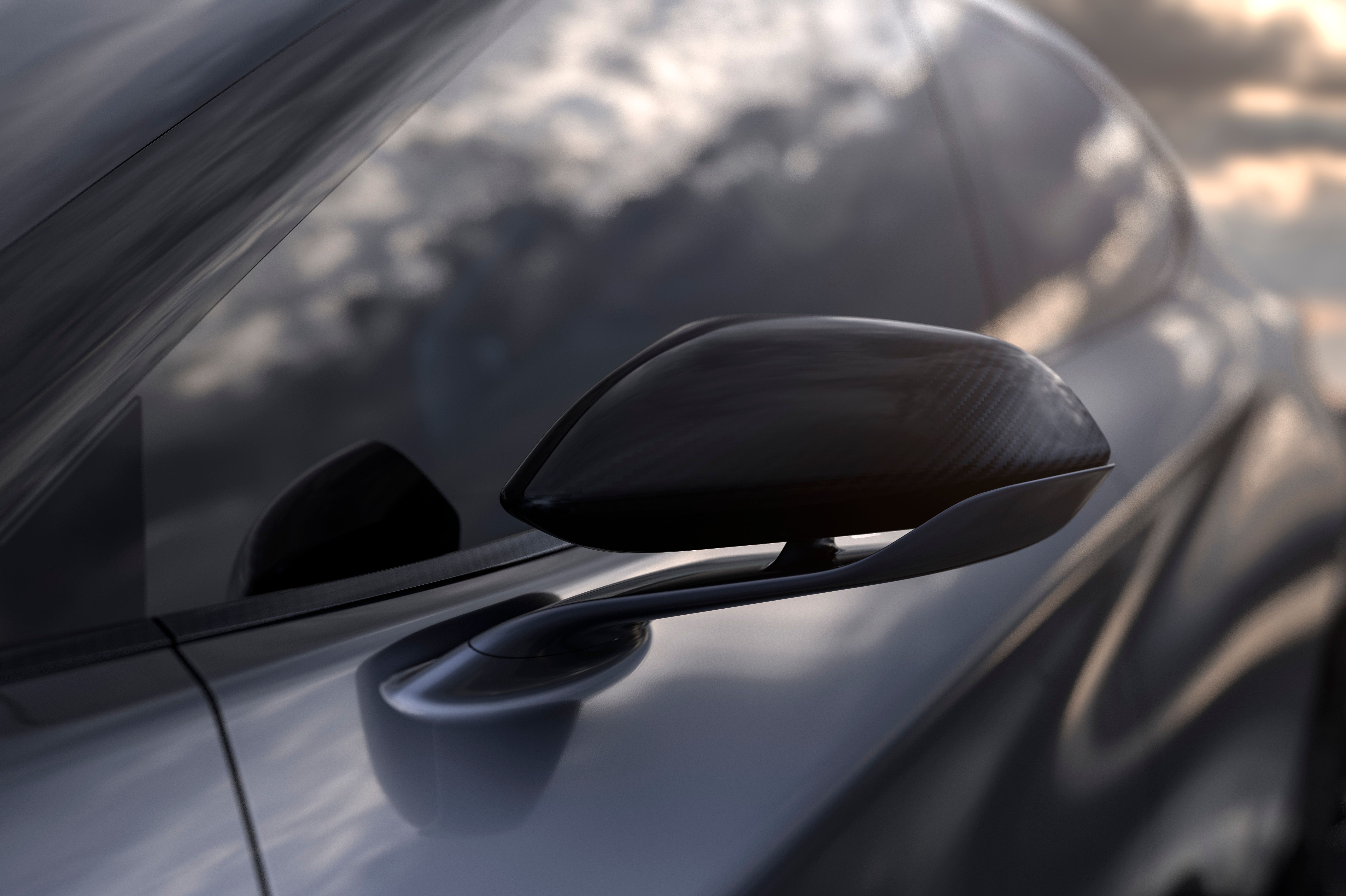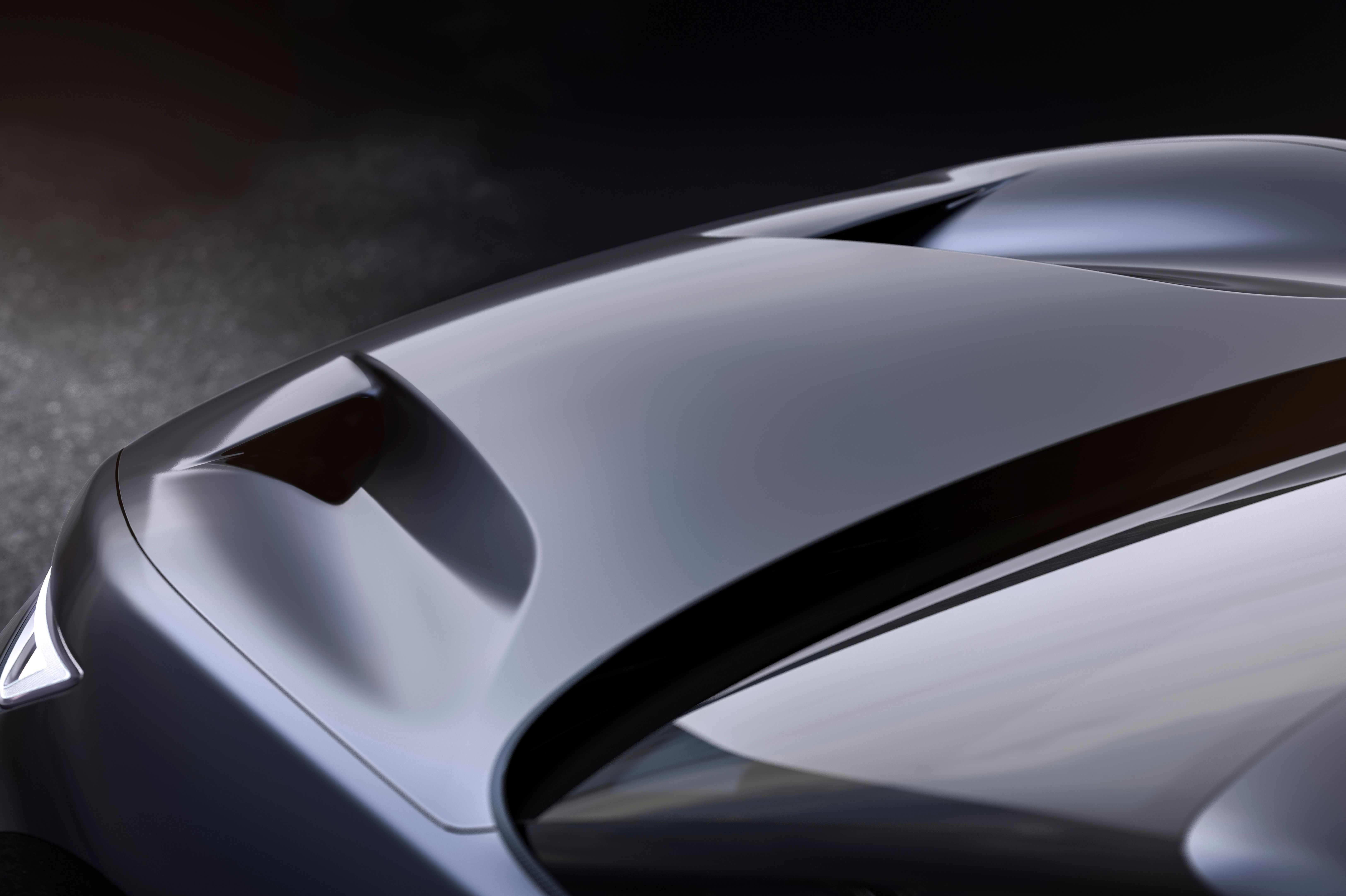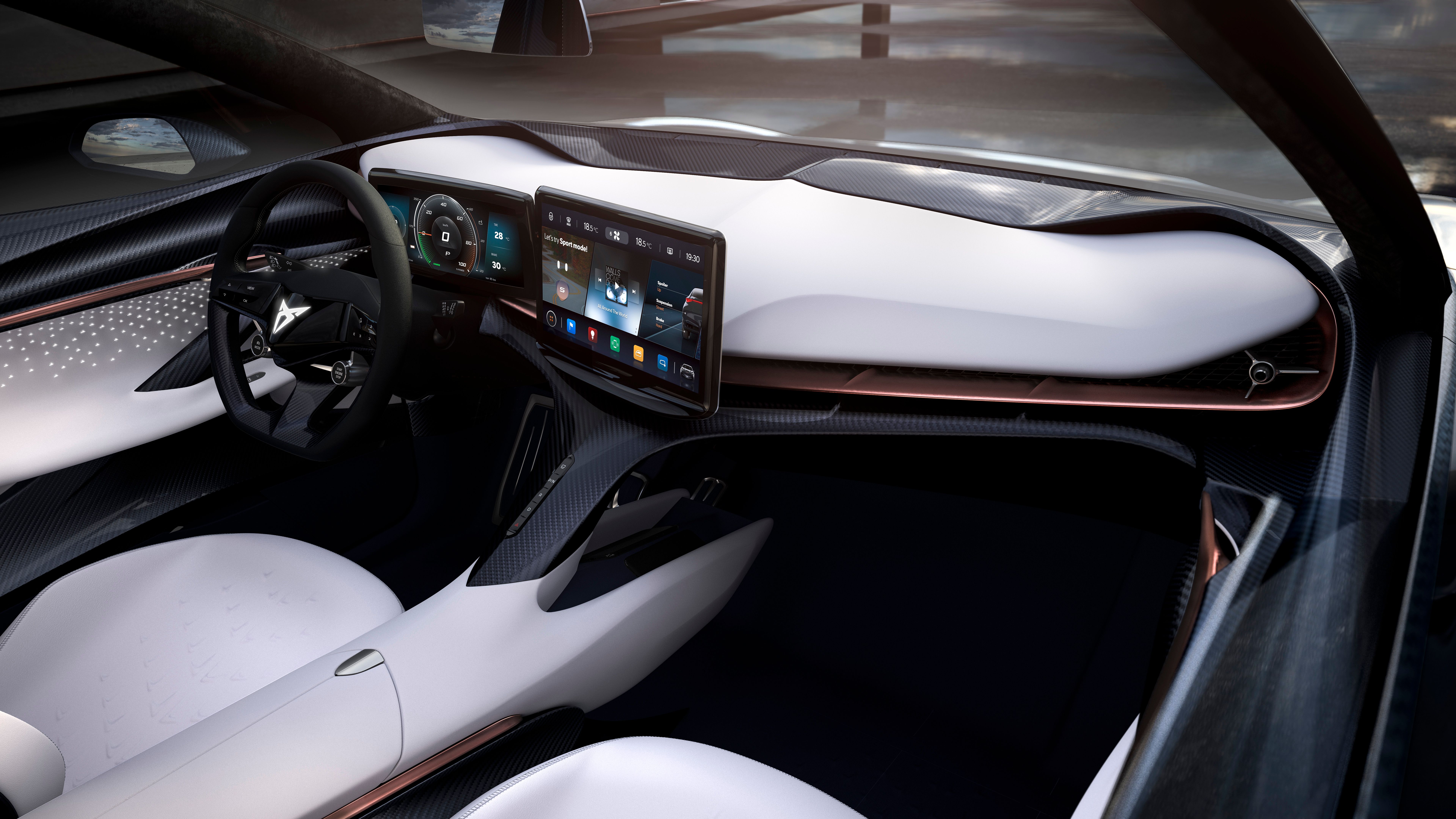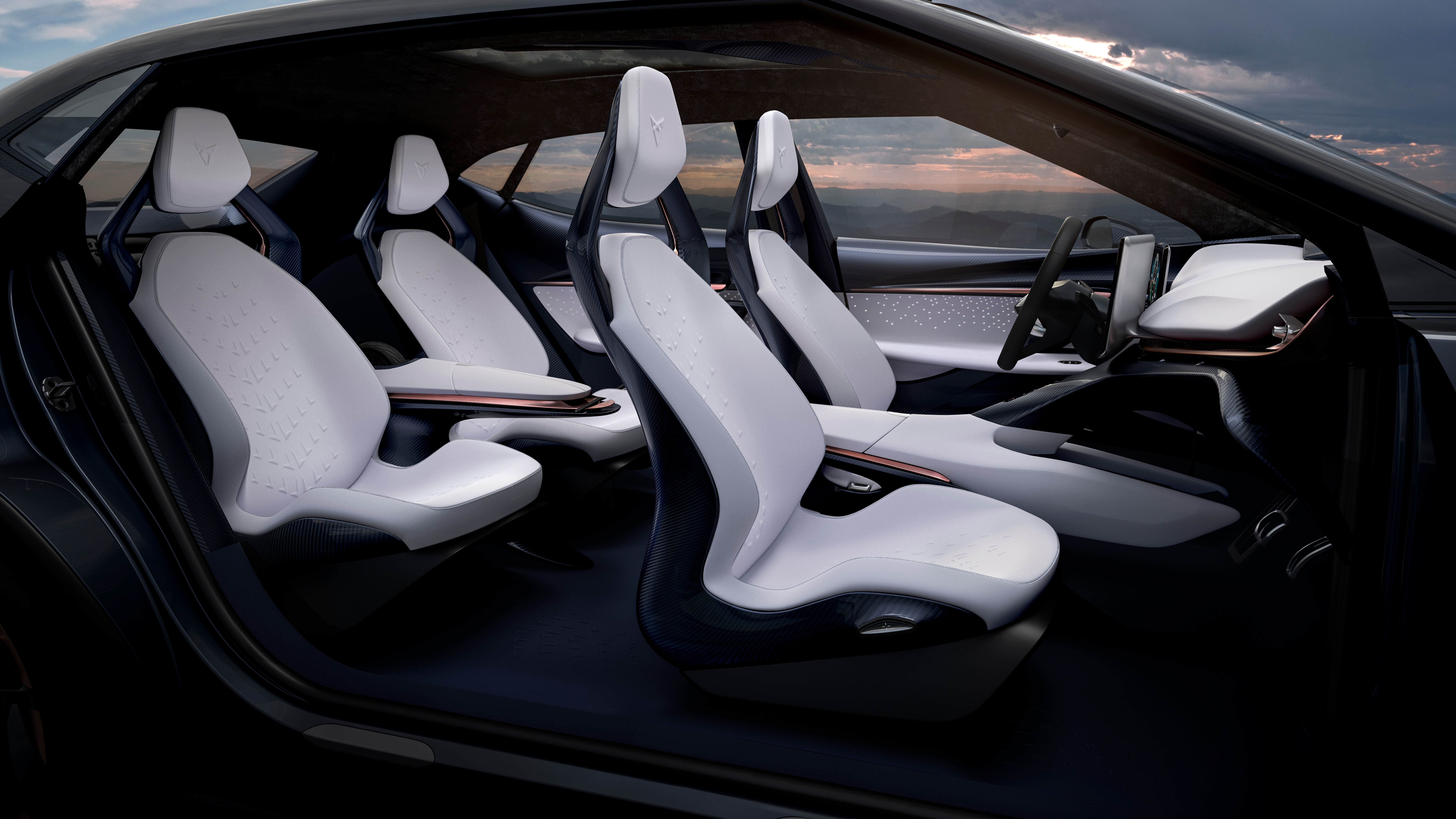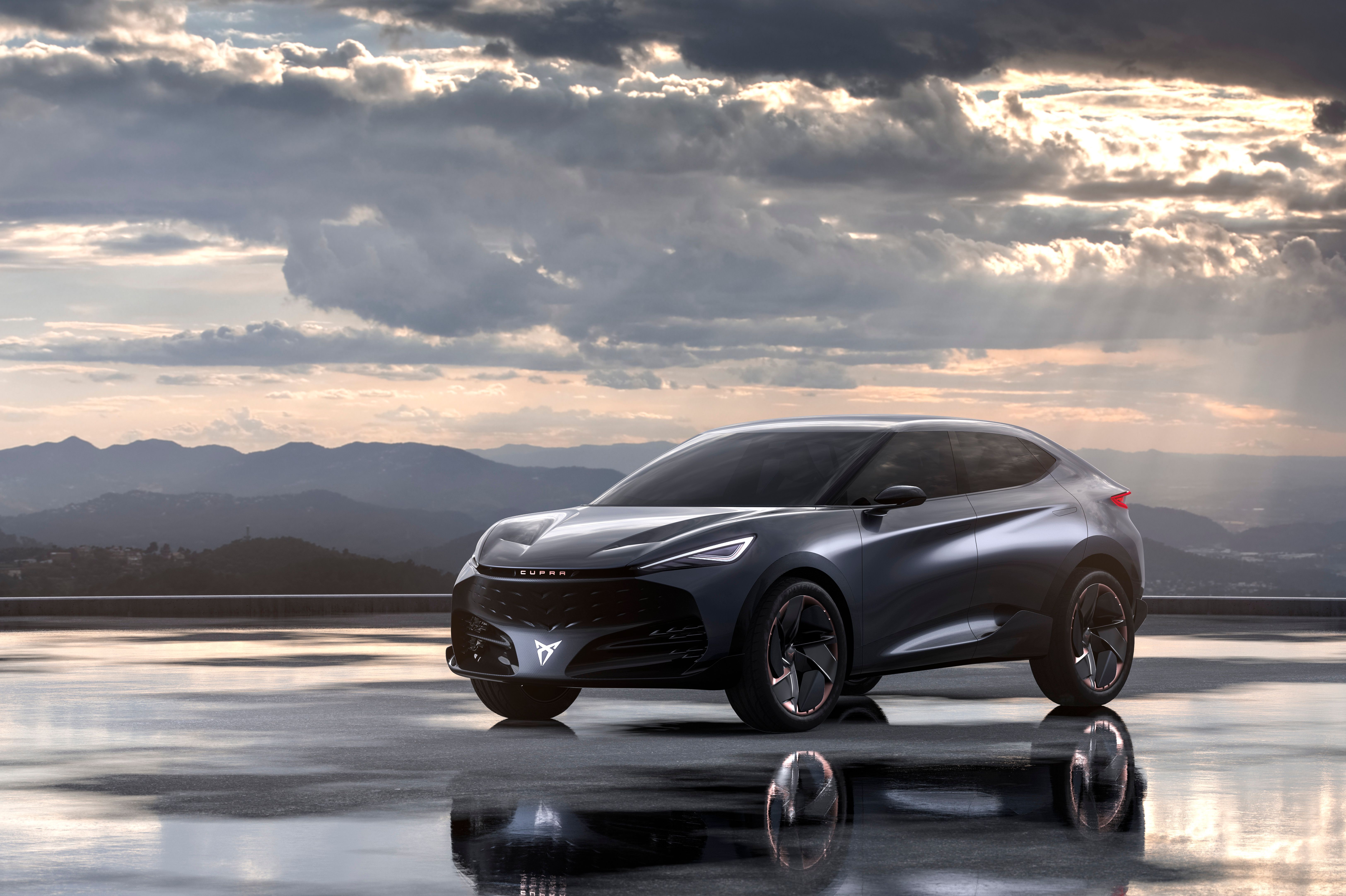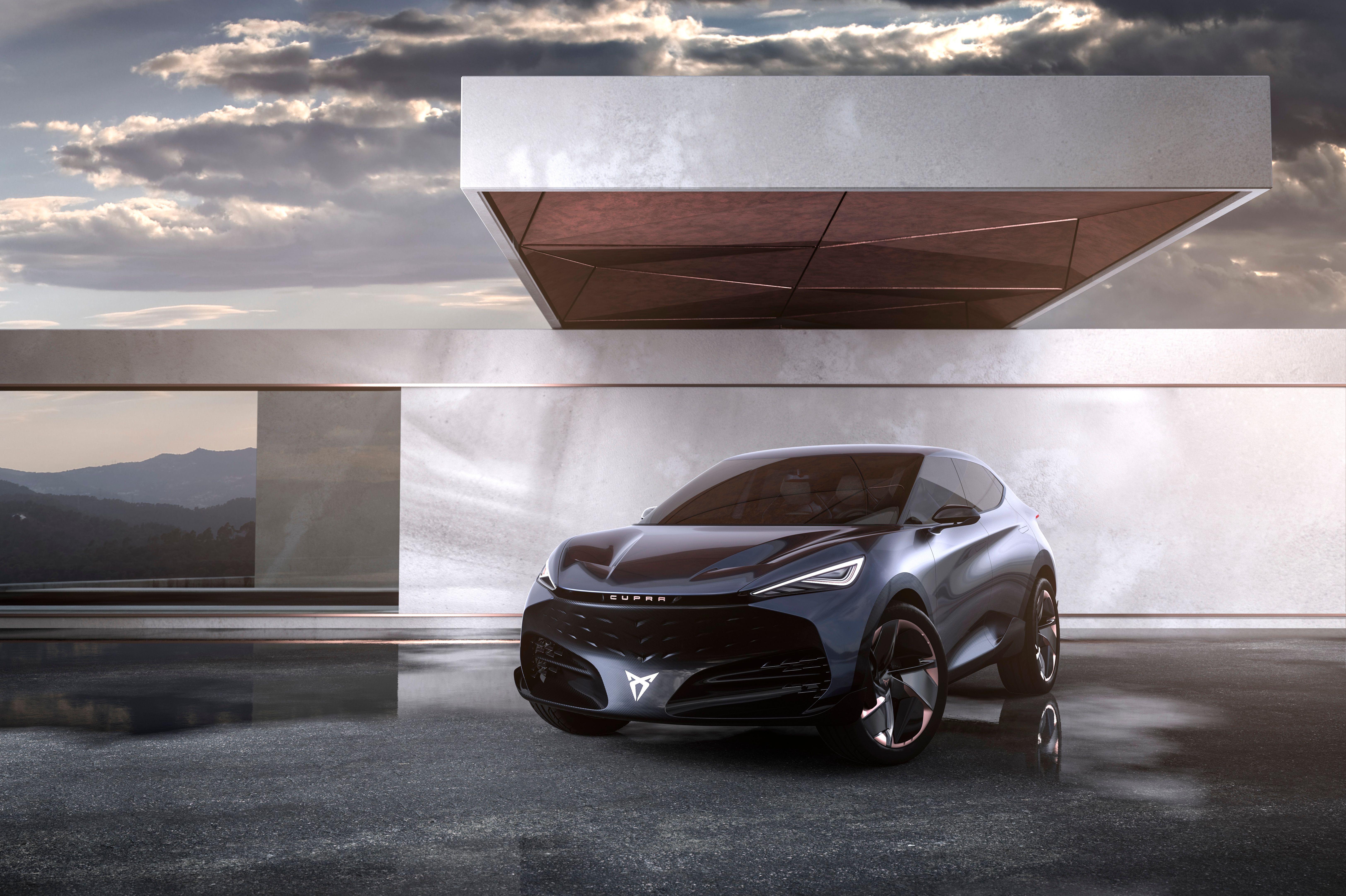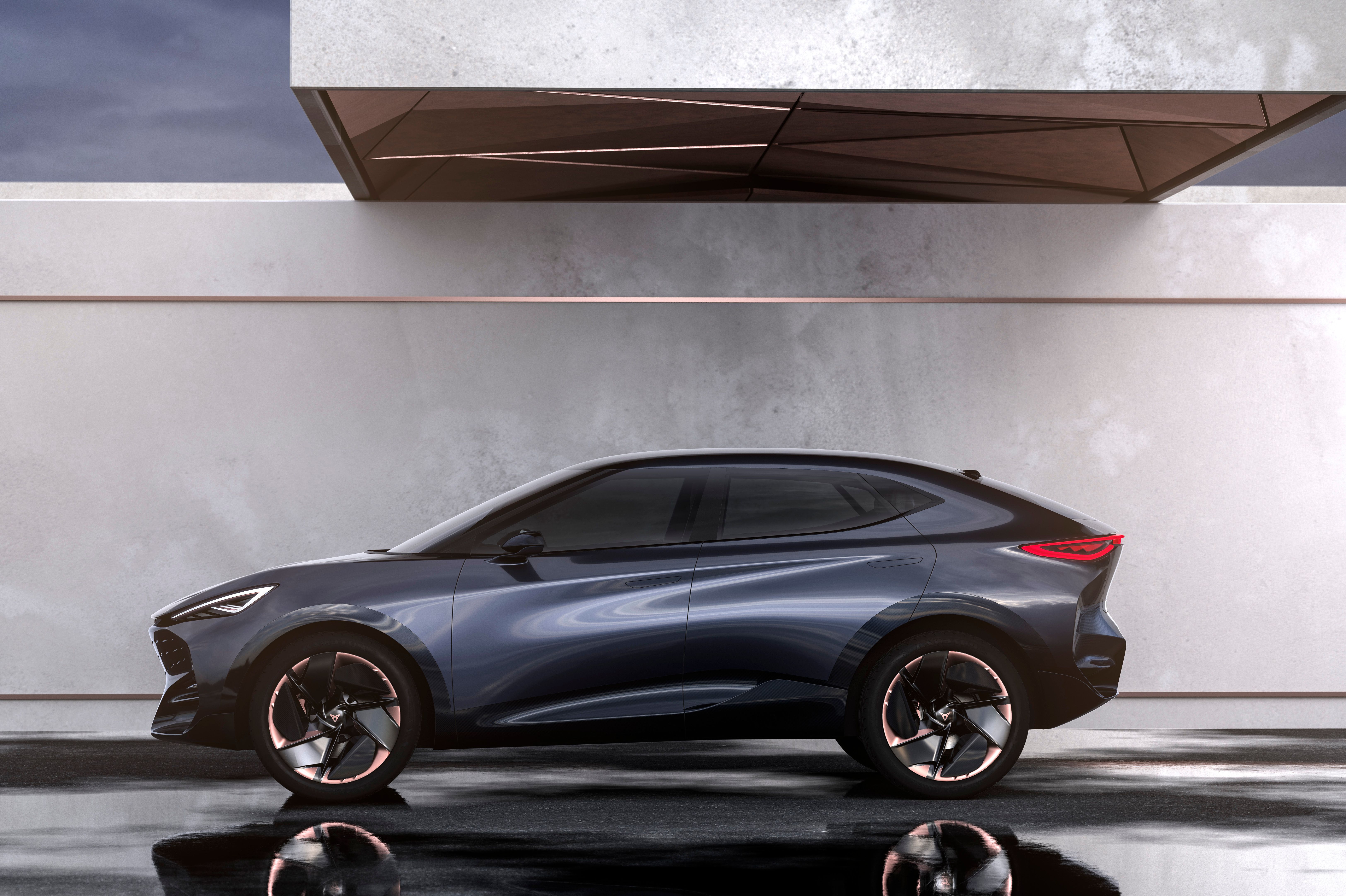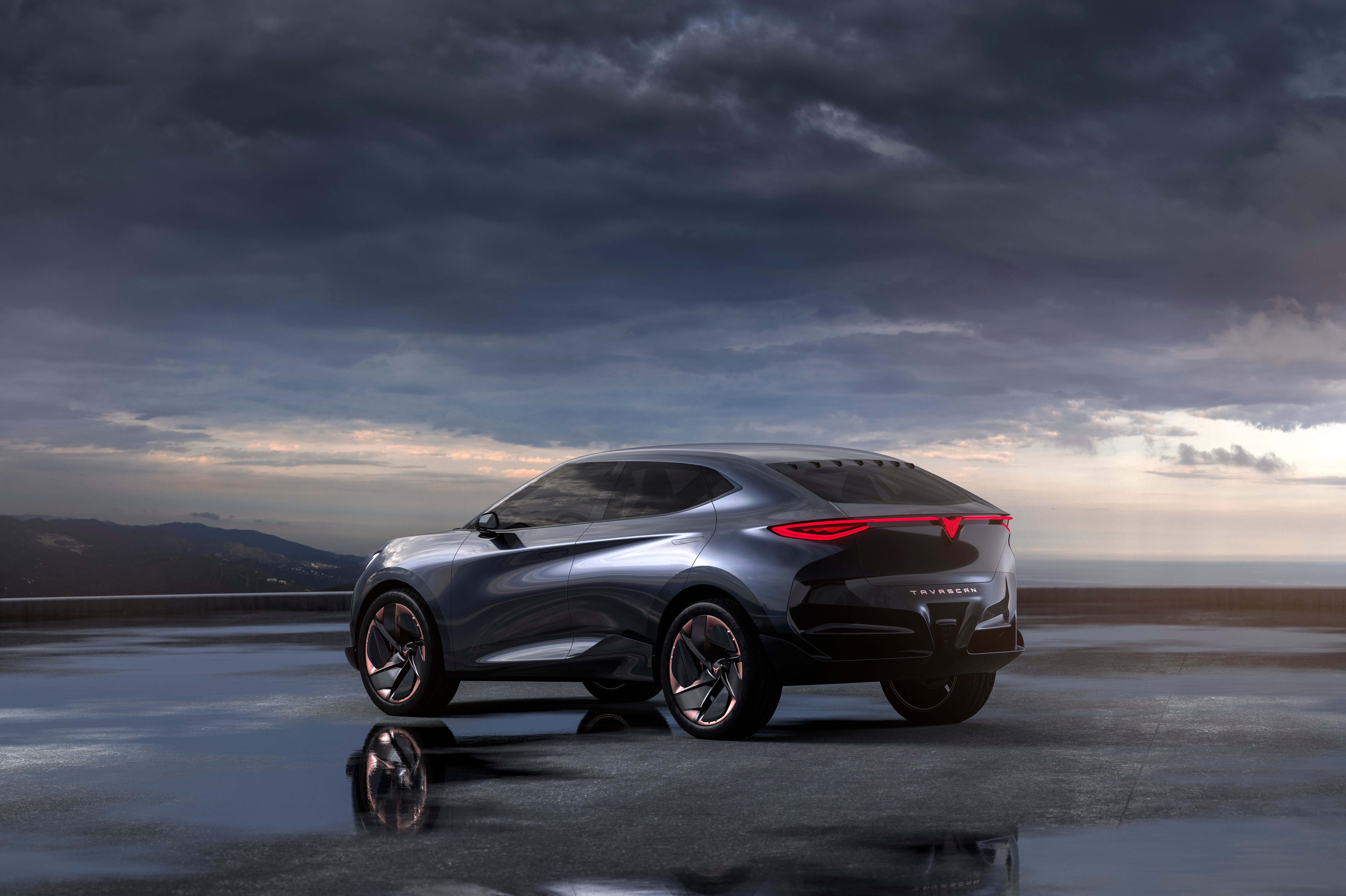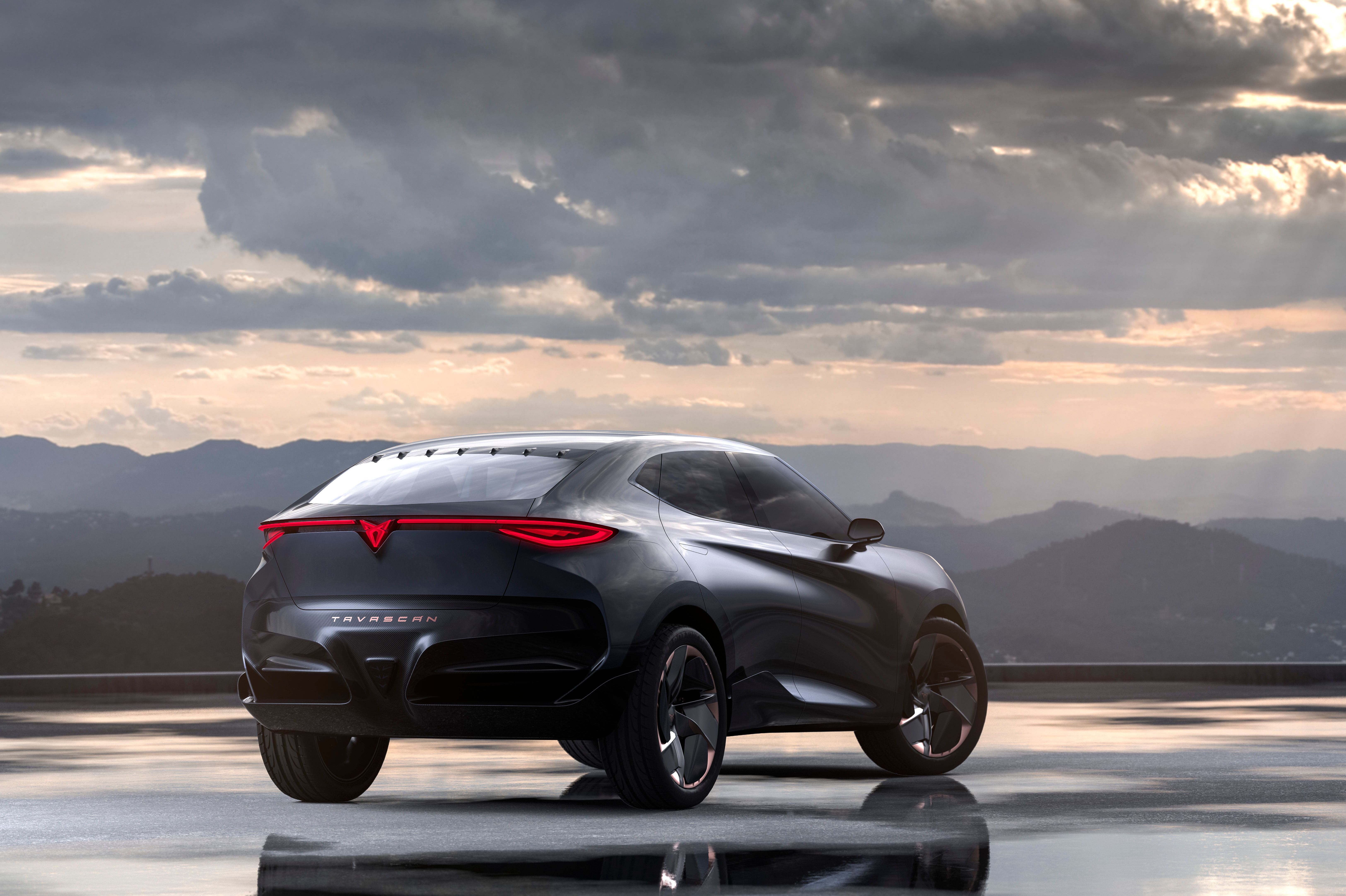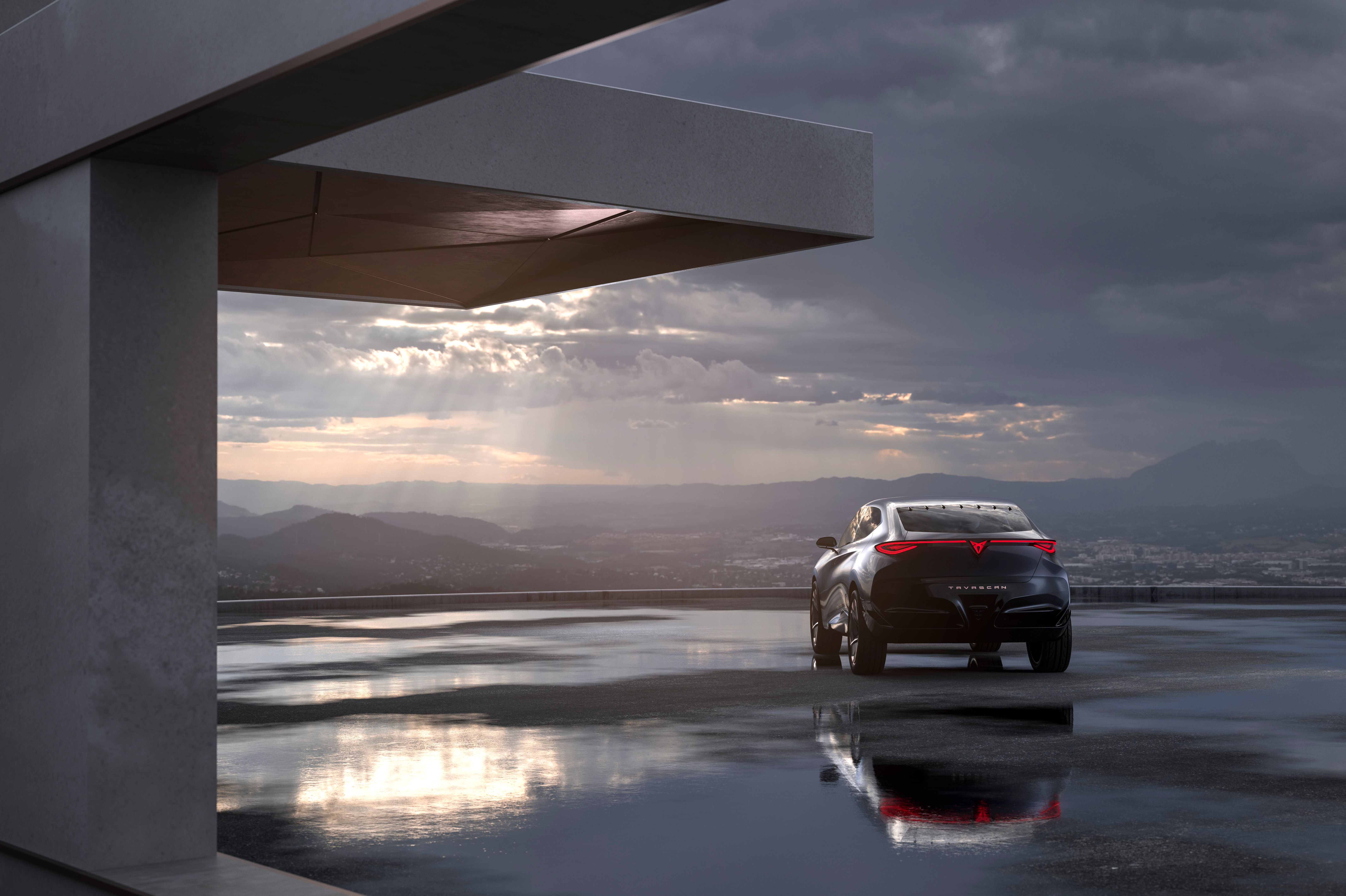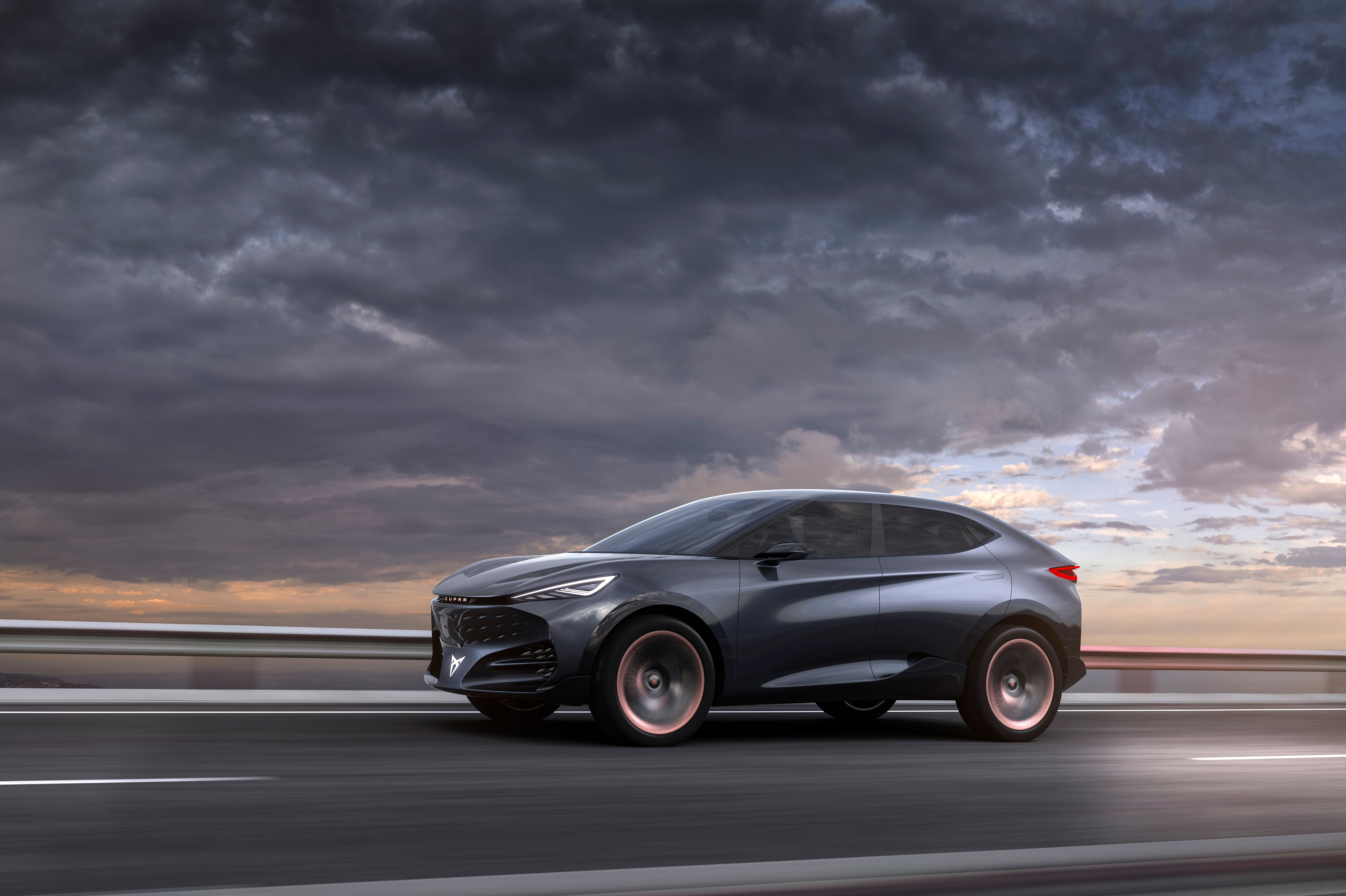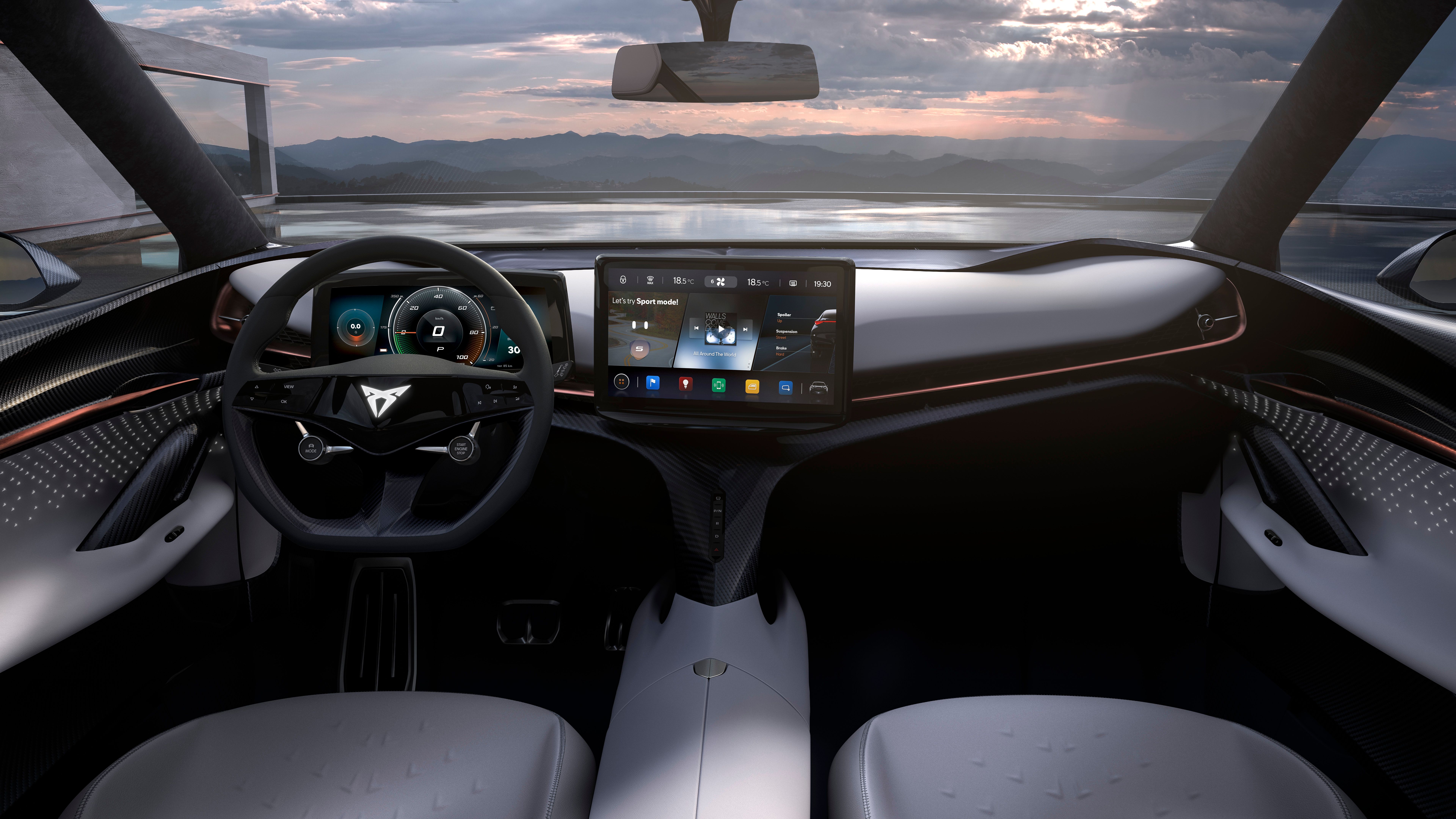Out of all the cars churned out by the Volkswagen Group that are not of the premium/luxury ilk, Seat’s models have been the sweethearts when it comes to design, whether we’re talking the Leon, the Ibiza, or the likes of Ateca and Tarraco. CUPRA, a newly-born company that has its origins deeply rooted into the history of SEAT, is looking to follow and build on the same design creed with a stunning all-electric concept called Tavascan.
Now, as a new brand, CUPRA is just stretching its tentacles but it has been doing it with well-defined goals. For example, CUPRA has just become the official partner of FC Barcelona and it was only last month that it announced Mattias Ekstrom as its new e-ambassador and e-Racer official driver. Obviously, CUPRA is a brand that looks towards the future before anything else, so the concoction of all-electric concept cars shouldn’t raise any eyebrows. However, it’s the looks of said concepts that make us raise our hands and admit that CUPRA’s designers know what they’re doing. To further illustrate that, let’s have a closer look at the CUPRA Tavascan prototype, which the brand calls “a glimpse of our first 100% electric road vehicle.”
2019 CUPRA Tavascan Concept
- Make: Array
- Model: 2019 CUPRA Tavascan Concept
- Horsepower: 302
- [do not use] Vehicle Model: Array
Exterior
If you thought the CUPRA Formentor concept looks menacing, wait until you get a closer look at the Tavascan.
In case you’re wondering how the name came up, Tavascan is a village located in the Pyrenees and mostly known for its stunning landscape and surrounding nature. Speaking of landscapes, the Tavascan is, in all fairness, an intriguing (concept) car to look at. It’s based on Volkswagen’s MEB platform and it features a couple of design features that we simply can’t ignore. One of them is the illuminated CUPRA logo that sits very low on the alien-looking front bumper. CUPRA says this is a hint at the concept’s all-electric heart and we must say it does look neat, although we’re not sure if it will make its way on the production model. We’ll see. You might think that since this is a fully-electric car, cooling is not as important as with an ICE-powered vehicle, but you’d be wrong.
While we don’t expect the wheels to make it on the production version in their current size, the headlights and taillights (aka a LED strip that’s interrupted only by the illuminated CUPRA logo) look like prime candidates to decorate the road-going version of the Tavascan concept, especially since the rear LED strip thing is another trend that’s been getting a lot of attention from carmakers recently. The retractable door handles could also find their way to the road-legal Tavascan, which won’t be the first car to implement this solution - see Tesla’s Model X and the Range Rover Velar.
Interior
The carbon theme is continued on the inside, but unlike the exterior, the Tavascan’s cockpit packs a lot more features that are actually doable and suitable on a production version. Take the steering wheel, for starters. Plus or minus the illuminated CUPRA logo at the center, it looks like it’s ready to be held by drivers, perhaps with a tad less carbon fiber trim in the lower area. We also hope CUPRA keeps the engine Start/Stop button on the steering wheel, as it’s a cool place to have it instead of hiding it on the dashboard, out of sight. Moreover, it is complemented nicely by the driving mode button which sits on the opposite side of the steering wheel, an arrangement that might hint at the Tavascan’s performance prowess. Could CUPRA go for an SUV that’s in a way more related to the Taycan than the Model X in terms of what it offers, with performance being the numero uno concern and comfort/range falling in second place? We’ll wait and see.
A quick mention regarding the multimedia screen - although its idle position sees it tilted towards the driver, CUPRA tells us it can actually shift its orientation towards the passenger when needed. That’s neat, whichever way you decide to look at it.
In any case, the cabin has that high-tech feel worthy of an electric car and there’s no doubt that once launched, the production version of the Tavascan will pack a hefty technology pack that will touch on pretty much every aspect from safety to connectivity and entertainment. Why are we anticipating that? Because Volkswagen as a group has been pushing hard with investments and developments in this area, with results starting to show in various lineups, including Volkswagen and Porsche.
In this regard, we expect the road-going Tavascan to offer the best of the best. As we mentioned earlier, the concept’s cabin as it is looks ready to make it into production, perhaps sans the carbon fiber infusion. In a way, spicing up the cockpit from a tech point of view is only a natural move since this looks like the norm these days, and we’re sure Volkswagen AG wants all its brands to be more or less on the same level if they are to stand a chance in front of rivals such as Tesla, Mercedes-Benz, and BMW.
Drivetrain
It finally comes down to this, doesn’t it? Every time a new electric car hits the online shelves, people are bound to inquire about its performance credentials first. It’s the same with CUPRA’s Tavascan, which, says CUPRA, packs “an advanced all-electric powertrain that provides the thrill every driver desires.” Sounds good, for sure, but let’s delve deeper into the details. The Tavascan employs two electric motors. One of them in integrated into the front axle and has the task of spinning the front wheels, while the other is integrated in the rear axle and, you’ve guessed it, powers the rear wheels. So nothing new or out of the ordinary so far.
2019 CUPRA Tavascan Concept specifications
|
Engine |
Two electric motors |
|---|---|
|
Combined power output |
302 HP |
|
Battery pack |
77-kWh |
|
0 to 62 mph |
6.5 seconds |
|
Range |
450 kilometers (280 miles) |
Making sure the two motors are getting the right amount of food is a 77-kWh battery pack of the Li-ion variety which can store enough energy to allow a maximum range of 450 kilometers (that’s roughly 280 miles) with a single, full charge. CUPRA also wanted to mention that the estimate was produced via the WLTP testing cycle, so future customers should expect similar figures during real-world use. Then there’s the claim of dynamic prowess, which stems from the concept’s use of VW’s MEB platform.
Final Thoughts
The Tavascan concept will take a bow at the 2019 Frankfurt Motor Show to shed some more light on CUPRA’s future plans. For now, the company seems to be taking the beaten path in the sense that it’s adhering to the all-electric trend with one of the most desirable packages found on today’s market. That is, the SUV-coupe shape, a very loved twist that combines four doors, the high-ground-clearance stance of a crossover and the sloping roofline that reminds us of a coupe. The year is 2019 and people are breaking their backs to get their hands on such a contraption, so in a way, playing it safe shouldn’t be a surprise when it comes to newborn carmakers. After all, would you take the risk of making your first all-electric vehicle a sedan or a station wagon? No, of course not.
CUPRA’s advantage, however, is that it belongs to a bigger automotive group that has the firepower and willingness to aid with technology and know-how that’s already been acquired over years and years of research. The same, however, can’t be said about the likes of Bollinger and even Rivian, although the latter has received a hefty $500 million investment from Ford and has poached staff from Tesla and even McLaren. Coming back to the Tavascan, it is clearly aimed at the European clientele and will benefit from VW’s influence and infrastructure (we’re talking sales network, dealers, service workshops and the lot) once it hits the market in a toned-down production version. How much of the concept’s aggressiveness will be lost in the process, well, that’s something only time can tell. For now, we’re just looking forward to seeing the prototype in the metal at the Frankfurt Motor Show.
Further reading
Read our full review on the 2019 Cupra Formentor Concept.

